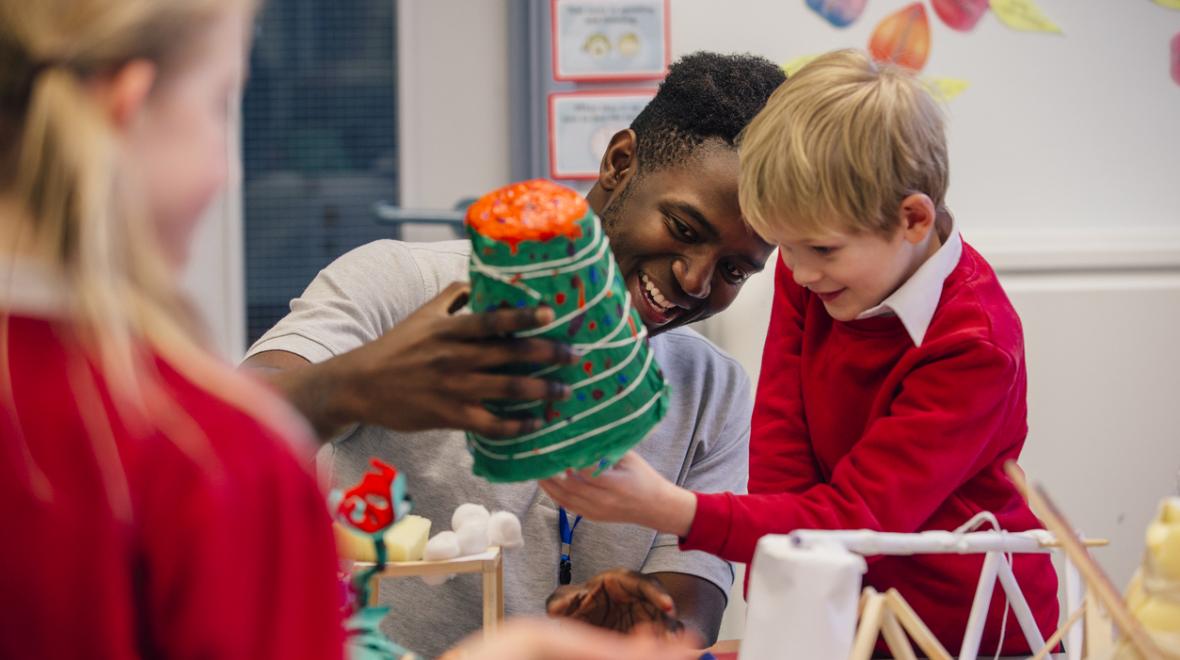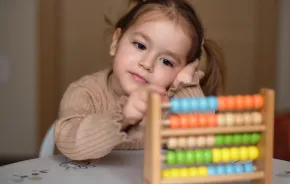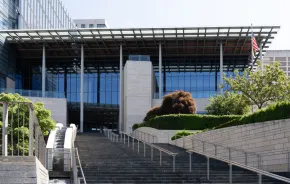
Editor's note: This article was sponsored by the The Bear Creek School.
Because science degrees often provide a more direct path to gainful employment, and many of the best jobs that will be available when today’s kids graduate college haven’t been invented yet, it’s easy to understand the prevailing obsession with STEM-based education. But the belief that education requires a choice between science and art is a damaging false dichotomy. Ask any successful scientist, and they will tell you creativity is an integral part of the work they do. Numerous studies have confirmed that the skills kids learn from studying art are critical to success in our 21st-century job market. But the battle between art and science is even more fundamentally flawed because it presumes an assumption that education is no more than preparation for the workforce.
This utilitarian view is a fairly recent development in education, and a stark contrast to the classical view that the purpose of education is to cultivate the mind. At The Bear Creek School, a non-denominational Christian school serving 840 students from preschool through 12th grade in Redmond, Karen Blankenbeckler, vice president for academic affairs, says a classical liberal arts education is intended to “help kids … get to the bigger outcome of who they’re going to be.”
Why study liberal arts?
Liberal arts schools are known for their strength in teaching the humanities ― after all, “arts” is right there in the name ― sometimes at the expense of science. But Blankenbeckler says the philosophy behind a liberal arts education is much more holistic. “The tendency in modern education is to dis-integrate knowledge into separate subjects. We believe that all knowledge is interconnected. A liberal arts education gives students a broad-based understanding of humans and the world. You can’t separate out science.”
Blankenbeckler points out the that science and art are both ways we use our senses to better understand the world. The scientific method enables science to provide answers to specific questions, while art is capable of moving the soul. History and philosophy provide context to help us more wisely use the knowledge gained from more concrete areas of study. “All studies are important and interconnected,” says Blankenbeckler.
We believe that all knowledge is interconnected. A liberal arts education gives students a broad-based understanding of humans and the world. You can’t separate out science.
There is research supporting the philosophy that the separations among branches of knowledge are artificial. Recent studies have shown that students learn science better when art is incorporated into the classroom. Many successful artists now use coding to create their work ― in fact, some people claim that coding is an art form itself. Interdisciplinary may sound like a modern buzzword, but it may be more accurate to call it a rebranding of the concept of broad, rather than applied or specialized, learning, which is as old as academia itself.
In Plato’s day, students sought to understand how they could achieve a happy, virtuous life through wide-ranging discussions that traced the connections between ideas. At The Bear Creek School and many other liberal arts schools today, this approach takes the form of a chronological progression of ideas, in which students study the history, literature, philosophy, and even scientific discoveries of the same era in all of their classes.
The most in-demand skills for 2019 are in technical categories like cloud computing and artificial intelligence, and there’s no reason to think that the jobs available when our kids enter the workforce will be any less technical. But unless your child is entering the professional workforce in the next five years, the specific technical skills they will need are not even available yet. At the elementary and secondary levels of education, students are better served by learning and cultivating critical thinking skills (Socratic method, anyone?). In a fast-changing world, learning how to learn is the strongest foundation for every career path.
Preparing for college, preparing for life
Despite the contemporary obsession with STEM-centered schooling, science and math taught in the context of a liberal arts curriculum still prepares students for college academically. National statistics are hard to find, but the anecdotal evidence is strong. For example, at The Bear Creek School, 27 credits are required to graduate (compared to the Washington state standard of 24), with math offerings through multivariable calculus and 12 different AP courses (in which 86 percent of students achieve scores of 3 or more).
Ninety-nine percent of Bear Creek grads go on to higher education. That they typically enter liberal arts colleges is perhaps not surprising, but Bear Creek grads have also been accepted to some of the nation’s best science-focused universities, including MIT, CalTech and Harvey Mudd. “But college is part of the path, not the outcome,” says Blankenbeckler.
Beyond college prep
Like many public schools, The Bear Creek School requires students to complete service hours in the broader community as a requirement of graduation. But at 100 hours, Bear Creek’s is a much more substantial requirement than most schools. Community service and leadership experience are critical 21st-century skills that look good on a college application and will serve students well in any career they pursue. But the commitment to service goes beyond preparation for college. It’s rooted in the philosophy of classical education.
“The view of education that is more utilitarian ― go to college, get a good job ― is not about a happy, good life,” says Blankenbeckler. The desired outcome, she says, “is for our grads to engage their communities with wisdom, compassion, and courage.” An education designed to support the growth of the individual can still be found in contemporary liberal arts schools.
|
Sponsored by: |
 " /> " /> |











